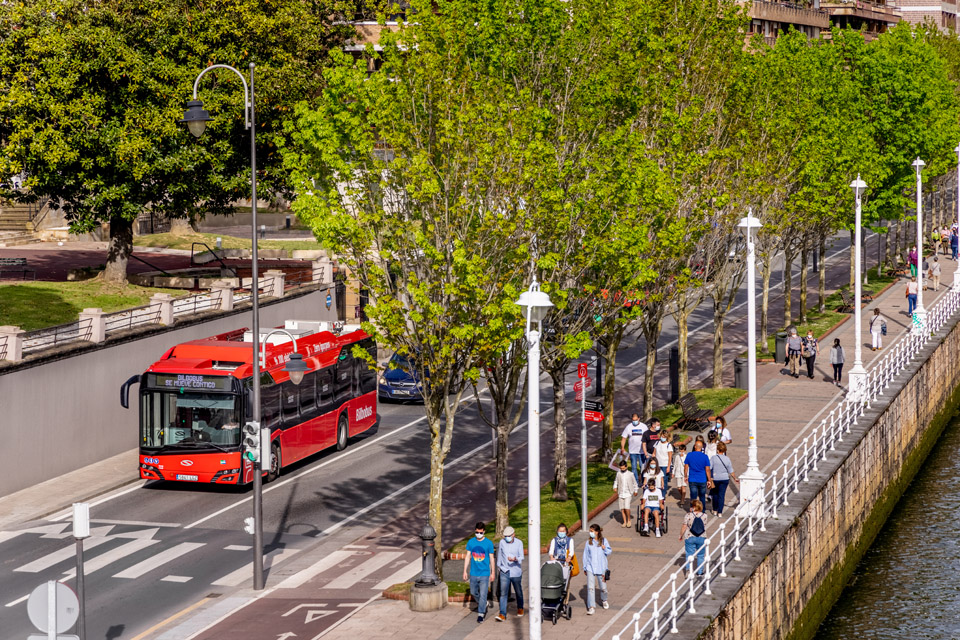In-motion charging (IMC)
In-motion charging (IMC) is another method of charging batteries in city buses. How exactly does it work?

Looking at the statistics for new car registrations, it is impossible not to notice the rapid increase in the number of battery-powered vehicles in recent years. This trend is also evident in the world of buses, where electric versions are becoming more and more present in European fleets every year. However, alongside the many benefits of electric vehicles, there are also concerns about whether electric drive is really clean and environmentally friendly. It is worth taking a closer look at this issue to answer the question: are electric buses environmentally friendly?
Sustainable public transport is a buzzword already firmly embedded in the thinking of a modern world looking for ways to combat climate change. This is hardly surprising – transport is responsible for almost 30% of total carbon dioxide emissions in the European Union, with road transport accounting for as much as 70%. With the number of vehicles produced worldwide increasing every year, reducing emissions from the transport sector is becoming one of the key challenges facing civilisation. Electric vehicles have become one of the tools in the fight for the environment due to their high potential to reduce greenhouse gas emissions and improve air quality. Thanks to continuous technological advances in the field of batteries, which have resulted in high levels of vehicle operability, electric cars and buses have quickly become a viable alternative to oil-powered transport. However, with the growing popularity of electric drives, doubts are being raised as to whether this solution is ecological and whether electric buses are environmentally friendly indeed. Today we will try to dispel these doubts by focusing on city buses.

ENVIRONMENTALLY FRIENDLY ELECTRIC BUSES – WHAT ARE THEY REALLY LIKE?
The main and undeniable advantage of electric buses is that they do not emit harmful substances into the atmosphere, wherever the vehicle is used, because… they have no exhaust pipe and they do not burn fuel. This feature helps to reduce urban pollution and improve air quality, which, in the case of internal combustion vehicles, is full of various harmful substances such as nitrogen oxides (NOx), particulate matter (PM) or carbon dioxide (CO2).
Electric buses are also more energy efficient. Electric motors are more efficient and convert a higher percentage of battery energy into propulsion than internal combustion engines. They also benefit from regenerative braking technology, which enables the storage and reuse of used energy.
But behind these arguments lies another question: “What about the emissions associated with generating electricity for electric vehicles?” Analyses show that the operating phase of the vehicle is responsible for the greatest environmental impact over its entire life cycle. In this respect, electric buses perform very well, with a significantly lower carbon footprint than other conventionally powered models.
What is more, electric buses can make a significant contribution to reducing greenhouse gas emissions beyond their immediate point of use – as long as the energy used to charge them comes from renewable sources. Only then can we speak of zero emissions. The environmental performance of electric buses therefore depends directly on the country-specific energy mix. However, and this is extremely important, even in countries where energy production is mainly based on fossil fuels, the environmental impact of electric buses is still significantly lower than that of internal combustion vehicles.
The energy grid is getting cleaner every year. Public transport operators also have more and more options to choose from cleaner energy sources than those supplied by the grid. Installing solar panels on depot roofs or using independent renewable energy contracts is becoming increasingly popular. Investment in renewable energy in the transport sector is also an important part of the European Commission’s wider energy strategy, which promotes the use of renewable energy in its Clean Energy for All Europeans Directive, including a target of 14% of total energy consumption in the transport sector by 2030.

An interesting statistic comes from the northern part of New York State, where an electric bus emits almost 90% less greenhouse gases than an oil-powered bus. The use of renewable energy makes these impressive figures possible. Today, the region has the lowest carbon footprint in the US, with about 30% of its energy coming from hydroelectric, 30% from nuclear and 30% from natural gas.
BATTERY RECYCLING IS EQUALLY IMPORTANT
The passage of time and the very intensive use of batteries in electric vehicles means that they lose some of their capacity over the years. A key priority for zero-emission vehicle manufacturers is therefore to continually develop technology to ensure that the energy storage units last as long as possible. In addition, priority should be given to ensuring that batteries can continue to be used after they have reached the end of their life in the vehicle. For example, stationary energy storage is one such ‘second life’ project, where used batteries are put to a wide range of uses. (You can read more about the Solaris ‘second life battery’ project here.)
While not all electric buses today can be considered lifecycle zero-emission, they represent a fundamental step towards more sustainable and environmentally friendly public transport. They produce no exhaust emissions, reducing greenhouse gas emissions, and are also highly energy efficient – offering real environmental benefits over traditional diesel buses.
The completely zero-emission nature of these vehicles means that challenges need to be addressed, such as the use of fully renewable energy sources to power them. However, we should look to this area with hope and expect to see a significant increase in the share of renewables in the energy mix. After all, 2022 was the year of the largest investment in renewable energy development ever (BloombergNEF).
Całkowicie bezemisyjny charakter tych pojazdów wymaga uwzględnienia wyzwań, takich jak wykorzystywanie w pełni odnawialnych źródeł energii potrzebnej do ich zasilania. Należy jednak spoglądać z nadzieją na ten obszar i oczekiwać znacznego wzrostu udziału źródeł odnawialnych w miksie energetycznym. Rok 2022 był wszakże rokiem największych inwestycji w rozwój odnawialnych źródeł energii w historii (BloombergNEF).
In-motion charging (IMC) is another method of charging batteries in city buses. How exactly does it work?
NMC, LFP and LTO are types of batteries, with different chemistries. Learn how each battery types affects vehicle capabilities.
What components is a battery made of? What kind of cell chemistry can it have? What are the key functional parameters? Check it out!